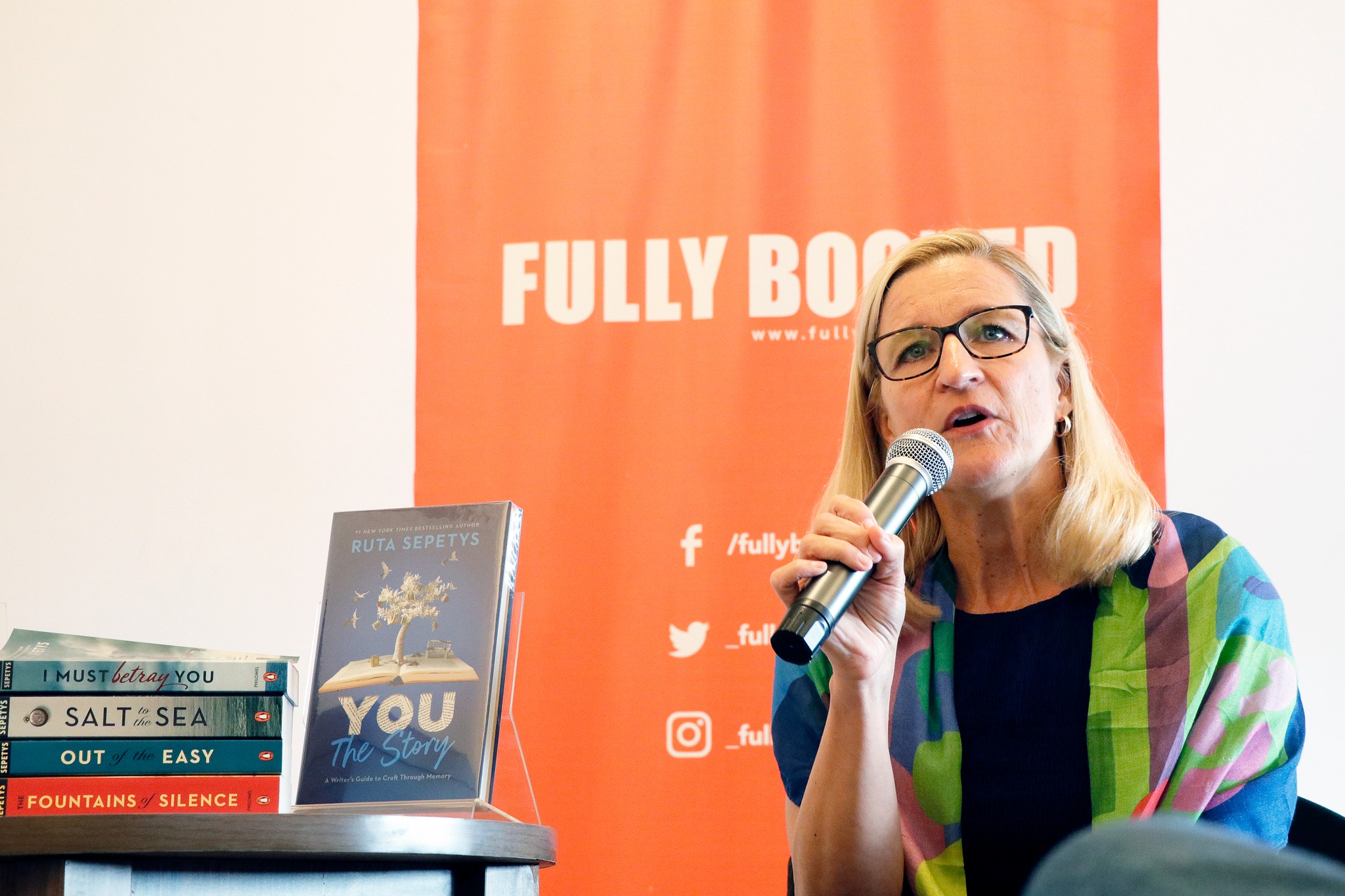
Photo / Fully Booked
Ruta Sepetys is undeniably an authority in historical fiction.
Her works have captivated audiences worldwide, having been translated into over 40 languages. They have even won awards like the Carnegie Medal and The Josette Frank Award for Fiction.
The author, who has been described as a “seeker of lost stories,” has written extensively on critical historical events, like the Soviet occupation of Lithuania (Between Shades of Gray), World War II (Salt to the Sea), the dictatorship of Francisco Franco in Spain (The Fountains of Silence), and the tyrannical rule of Nicolae Ceaușescu in Romania (I Must Betray You).
View this post on Instagram
The breadth of her work is astounding, and she shared how she chooses what events to write about, among other things, in a talk hosted by Fully Booked, entitled Writing Historical Fiction With Ruta Sepetys.
According to her, she chose historical events that directly affected her family. For Between Shades of Gray, she was inspired by her father, who escaped Lithuania and spent nine years in refugee camps. His family, meanwhile, were deported to death camps in Siberia. Salt to the Sea tells the story of her father’s cousin, who had passage on the doomed ship, the MV Wilhelm Gustloff.
The challenge lies in needing more topics. Sepetys shared that she turned to stories about which she was passionate. She said, “I’m passionate about stories that affected millions of people but have not become stories of the collective consciousness. I look for stories and pieces of history where young people were catalysts for change.”
Sepetys is clear that she does not take credit for these stories. She said, “I can’t claim ownership of these stories. I write the books, but history writes the story, and the story belongs to history.”
Writing historical fiction with Ruta Sepetys
View this post on Instagram
Sepetys takes a unique approach when writing. While her books are fiction, the premise closely follows history.
“I want to fit as close to history as I can,” she said. “If it’s raining, I will check the historical weather tables. I have an obligation to make it as accurate as possible. My creative liberties come with the composite characters and the dialogue. I try to best reflect what people have told me and what I’ve researched.”
Interviews also play an essential role in Sepetys’s research. It’s not always so easy, though. The author revealed that many were frightened to be interviewed for Between Shades of Gray. Her own father was afraid that she was writing the book. Many interviewees chose to be anonymous.
Sepetys protects interviewees by giving them a written document explaining what she would do and stating that she would not record the interview.
“I learned early on that when someone says, ‘You don’t mind if I record this, do you?,’ it changes the chemistry of the conversation. It’s not a conversation anymore. For some of the people I’m writing about, it feels like an interrogation.”
View this post on Instagram
Instead, Sepetys takes handwritten notes, which the interviewees can read after and have a copy of. If they feel uncomfortable at any point in the interview, they are free not to answer a question or even end the conversation.
During her interviews, she relies on sense memory questions instead of ones that could be answered simply. These include asking the interviewee to “take me there” or “walk me through it.”
“It’ll open a door to their memory and experience, sometimes things they haven’t thought about for many years. And in doing that, they will share details you would never think to ask,” the author said.
Sepetys shared an example of when she wrote The Fountains of Silence. She said, “I’m describing things, sights, smells, the pattern on the curtains. It wouldn’t be a question, ‘What was the pattern of the curtains?’ This true witness, in recounting the details, they’ll say, ‘I was in my grandmother’s kitchen. And I remember the boot stomp of the militia from outside the window, and the curtain, with the little strawberries, was waltzing from side to side.’ Those details, that’s what makes your historical fiction richer.”
The impact of historical fiction
View this post on Instagram
Books are undeniably powerful. The Diary of a Young Girl by Anne Frank, for example, bared the horrors of the Nazi occupation. Uncle Tom’s Cabin, by Harriett Beecher Stowe, influenced views on slavery in the USA and helped lay the groundwork for the American Civil War.
Sepetys also shows the impact of her books. The film adaptation of Between Shades of Gray (called Ashes in the Snow) was first released in Lithuania. It was attended only by the survivors of the Soviet occupation and Dalia Grybauskaite, the country’s president at the time.
“During the Q&A, a man stood up, and I get choked up thinking about it, he said ‘I’d like to introduce myself. I’m the Man Who Wound His Watch.’ And I thought, oh my gosh. You have given this man the courage to take ownership of his story, of his own history. It’s so validating and gratifying.”
What do you think? Share your thoughts below!
Do you have a story for the WhenInManila.com Team? Email us at story.wheninmanila@gmail.com or send us a direct message at WhenInManila.com Facebook Page. Interact with the team and join the WhenInManila.com Community at WIM Squad. Join our Viber group to be updated with the latest news!




